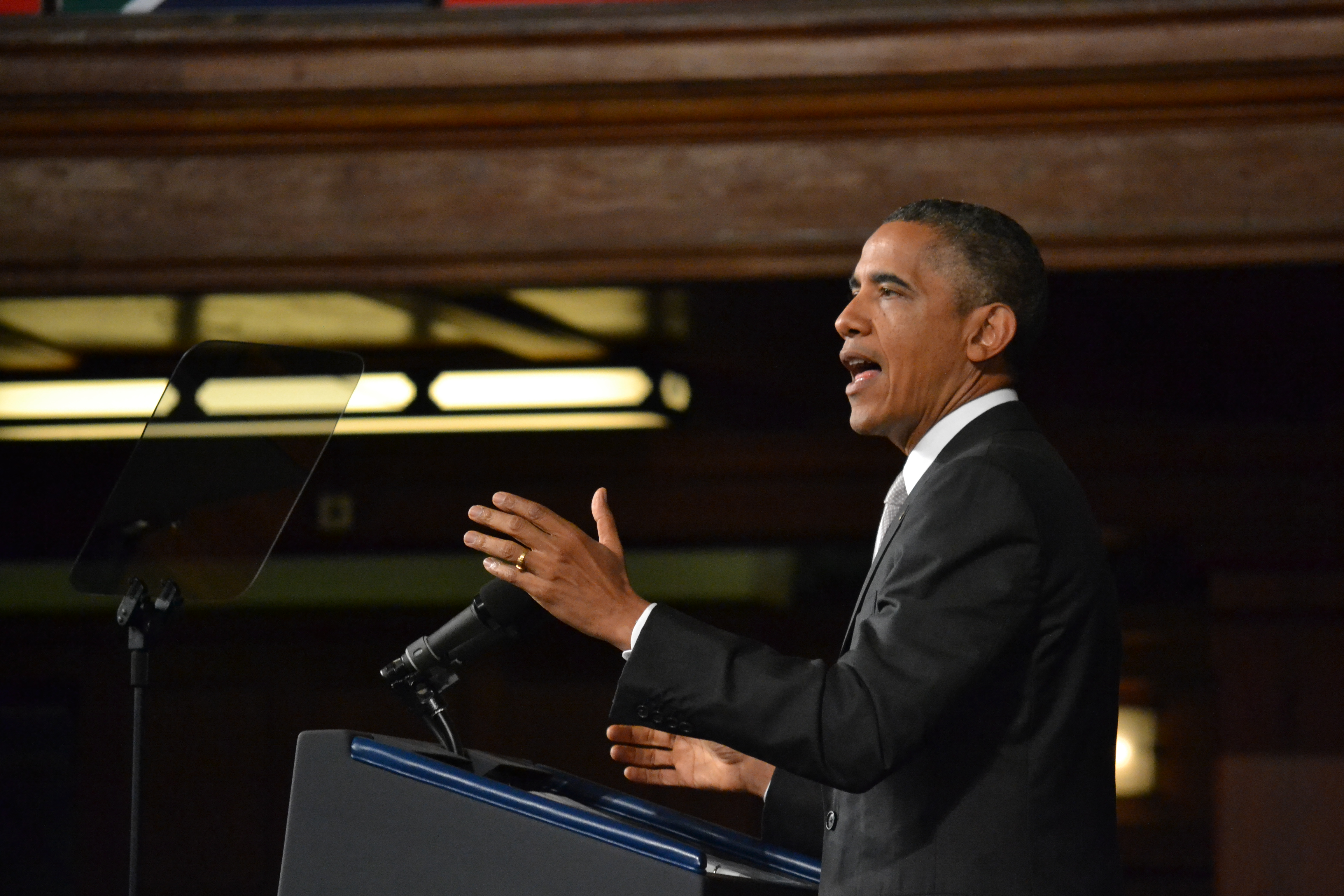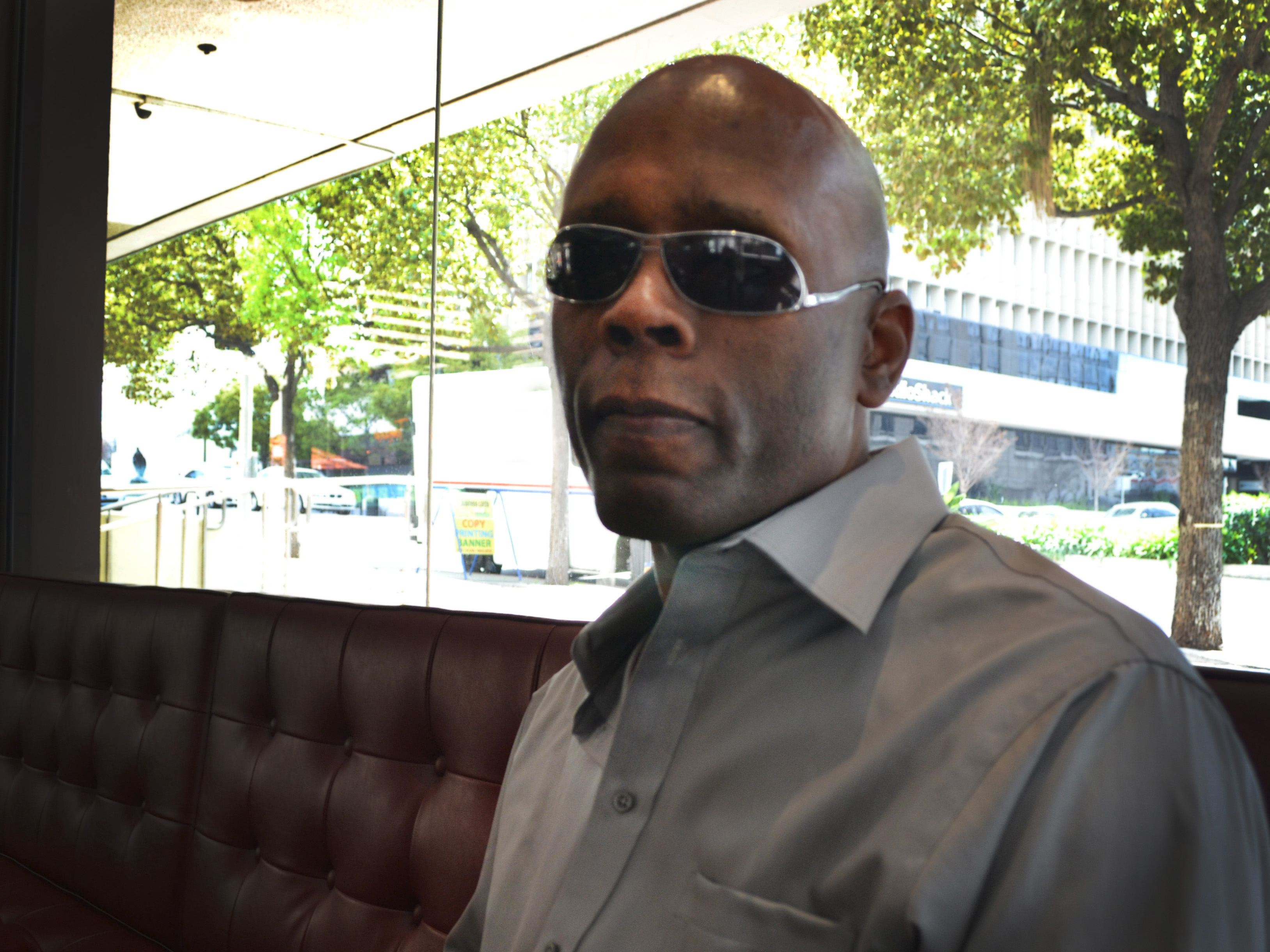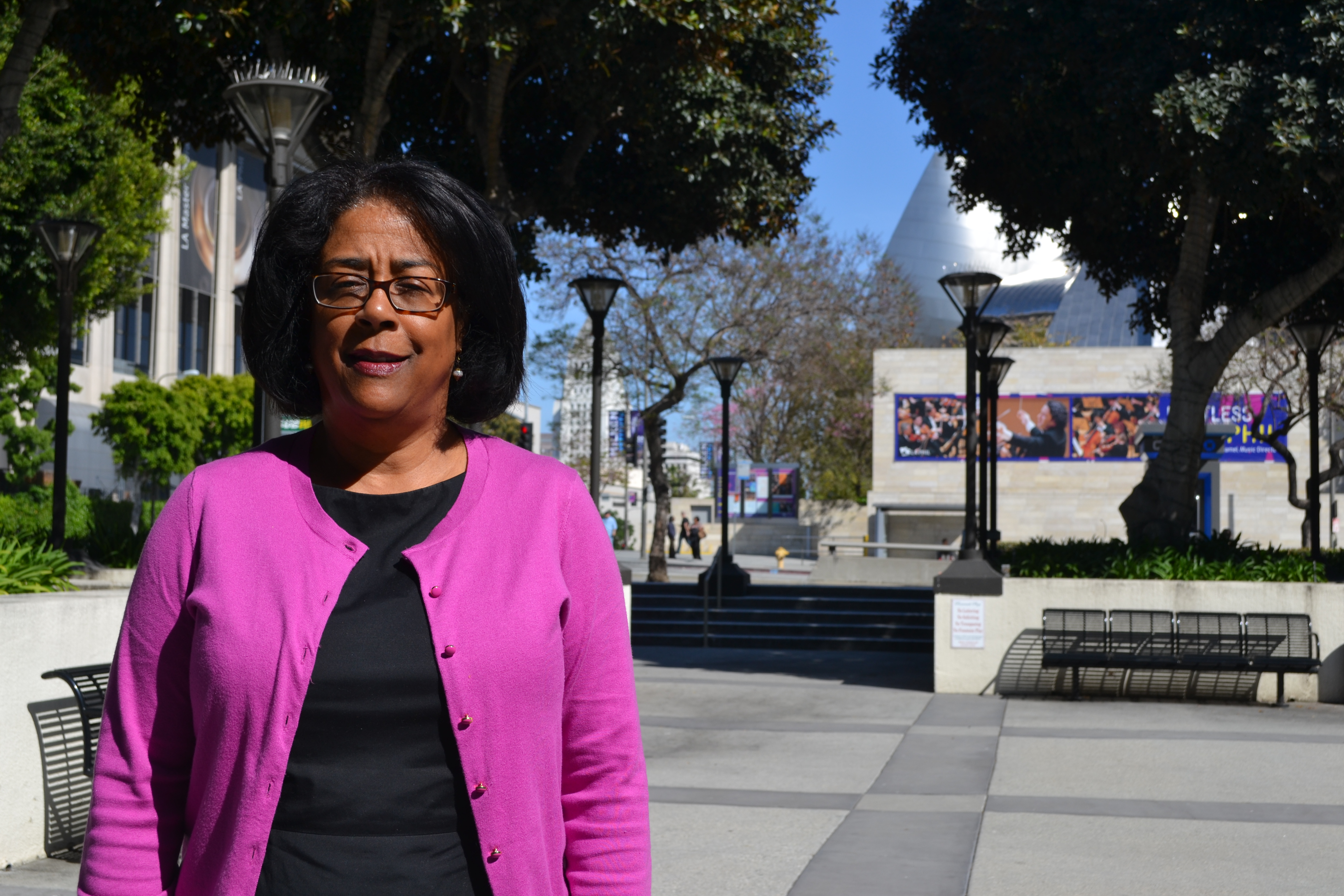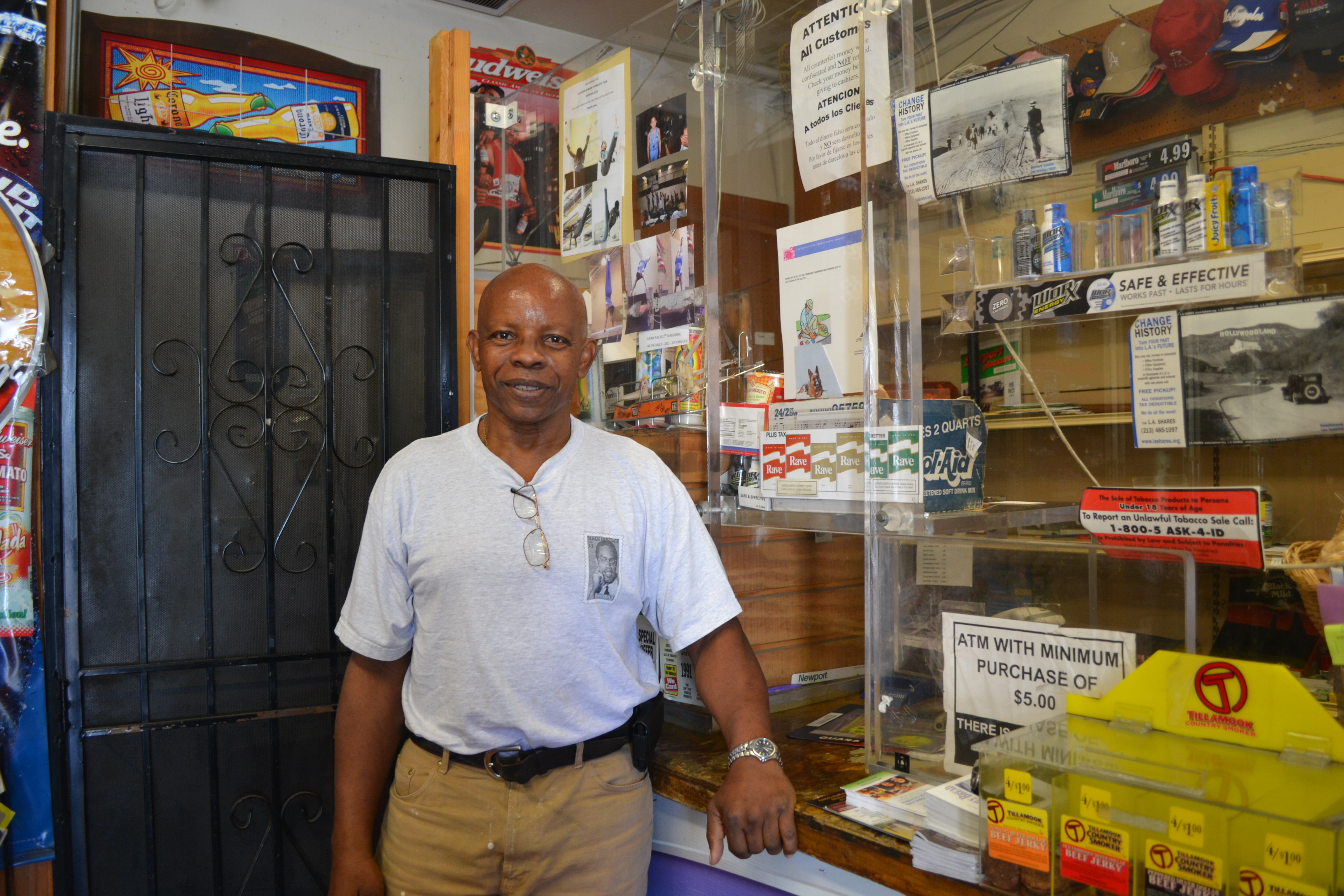On a Tuesday night in late April, the five members of the creative team behind Watts Village Theater Company’s upcoming “Meet Me @Metro” program gathered for their first round of auditions. Sitting at the end of the table was Lynn Manning, who started as the company’s new artistic director early this year.
“I was hesitant [to take over as artistic director] because I was enjoying being out of the game for the few months that I had been out of it,” Manning said in an interview. “I had been able to focus on my own personal career.”
But for Manning, taking on the role of artistic director is something of a homecoming. One of the company’s original founders, he is returning after a brief hiatus from the company.
Manning, 58, is a seasoned performer, playwright and poet, but his path to show business has hardly been traditional. For one thing, he happens to be blind. He lost his eyesight after being shot in the face 35 years ago. It’s just one piece of a rocky history he has had with his hometown of Los Angeles.
Home has proven to be such a complicated subject for Manning that he chose to explore it as the theme of the first show that he will lead as artistic director of the Watts Village Theater Company.
During auditions Manning, the show’s two directors, and the show’s curator Gamal Palmer looked for actors who could write, play music, and who could creatively approach the subject of home.
“What does home mean to you?” Palmer asked one actress who came to audition.
“It’s more of a feeling,” the young woman said, speaking of heart, family, and warmth.
For many people, home does bring warm feelings. For Manning, it’s not so simple.
“Home isn’t always a positive place to go,” Manning said. “In fact, sometimes home is a place you need to get away from.”
One of nine children, Manning was born to a single mother in South Los Angeles.
“She eventually crawled into a bottle and neglected us,” Manning said.
Around age 10, Manning, along with his eight siblings, began a migratory journey around Los Angeles, moving from foster care to group homes. Even with an unstable upbringing, Manning had begun to find his path by his early 20s. He finished high school and had even started working as a counselor at the group home in the Mid Wilshire District where he had spent his teenage years. Then, at the age of 23, Manning went out to a bar in Hollywood where he got into a fight with a stranger. Later that night, the stranger returned with a gun and shot Manning in the head. Manning was spared his life, but lost his vision.
“There was a need to redefine my dreams after that,” Manning said.
He had had an interest in pursuing painting, but with visual art no longer an option, he began studying at the Braille Institute and taking English classes at LACC. Poetry became his creative outlet. Manning said he was surprised to find poetry and performing arts came so naturally to him.
“None of this stuff was a part of my life as a kid growing up. My South Central life didn’t involve theater; it didn’t involve poetry beyond greeting card stuff,” Manning said. “I didn’t know this stuff could speak to me.”
The support of the artistic community gave Manning a feeling of encouragement.
“The audience response to my poetry recitals got me interested in the performer-audience dynamic,” Manning said. “I needed some more of that immediate gratification, so I got into acting.”
A televised production of David Rabe’s 1976 play “Streamers” was the first piece of theater to inspire him, Manning said.
“At the time I saw it I was living in a group home where homophobia and fear of cohabiting with different races of people was an issue,” Manning said. “When I saw that play I saw people I knew. I saw circumstances that I was familiar with. I wanted to be able to tell stories like that.”
When Manning began to study acting he felt even more need to share his experiences onstage.
“In my scene work I played characters that weren’t [visually impaired],” Manning said. “That was good, but I thought there were stories to be told about living blind in a sighted world.”
His first play, a one-act called “Shoot!” about a blind man trying to buy a gun, caught the attention of the Mark Taper Forum’s writing workshop and was later published in the anthology “Beyond Victims and Villains: Contemporary Plays by Disabled Writers.” He also won a Drama-Logue Critics Award for his trilogy of plays, “Beyond the Blink.” But while his fictional works were successful, it was his own story that gained him international recognition. His autobiographical solo show “Weights,” took him from Los Angeles to the Kennedy Center earning him an NAACP award, and praise in the L.A. Times and New York Times along the way. Since 2001, he has performed his life story at a festival for blind actors in Croatia, the world famous Edinburgh Fringe Festival in Scotland, and The Adelaide Fringe Festival in Australia. Just this April, he performed the play for an international high school in France. Manning’s solo career was taking him around the world, but his personal and creative roots remained in South L.A.
He had founded the Watts Village Theater Company in 1996 with fellow actor, Quentin Drew. Their mission had been to bring professional quality theater into the underserved South L.A. community of Watts. Before Drew died of cancer in 2005, Manning said they had discussed the possibility of him taking over as artistic director of the company. But Manning declined because he did not feel right for the role. He was enjoying a solo career, he knew the amount of work required to run a community theater, and his creative endeavors were already becoming a burden on his marriage, which ended in 2011. When Drew’s successor, Guillermo Aviles-Rodriguez resigned as artistic director at the end of 2012, Manning was asked a second time if he would take on the responsibility of leading the company.
“They could have done a citywide search and put the word out,” said John Freeland Jr., a longtime friend of Manning’s and stage manager for “Meet Me @Metro,” “but to bring a whole other energy in who doesn’t understand what the condition of the company is—it could be daunting for someone. Lynn knows the ins and outs, so it was just natural.”
Manning had a strong personal connection with the Watts Village Theater Company, but he had not envisioned himself as the company’s creative leader. Now that he has been in the role for a few months, Manning said he is “enjoying being able to map out future productions for the company.”
But the first production Manning was called upon to lead was the company’s most well known. “Meet Me @Metro” is a project that the Watts Village Theater Company has produced annually for the past three years. It invites playgoers to ride the Metro line—a different route every year—hop off, then watch performances near the stops. Last year, the production grew to include several Metro stops and dozens of performers.
“It was a long thing and it got longer,” Manning said, with a quiet laugh. “[Last year’s production] was fairly interminable.”
In addition to its length, Manning worried the production was losing its artistic value and its connection to Watts. Under Manning’s direction, “Meet Me @Metro” which will take place on Memorial Day weekend, will be much simpler. He has chosen to limit the show to the two Metro stops in Watts.
Depicting Los Angeles is important to Manning. He describes his main mission as telling South L.A. stories that don’t usually appear onstage.
But Manning acknowledges that his Los Angeles, heavy with the memories of a childhood in foster care, is not the only version of the city. In fact, Manning has surrounded himself with a creative team with a variety of backgrounds. He is the only L.A. native among them. He hopes the diversity of perspectives will make show’s theme will work.
As Ryan Anderson, one of the directors on the production explained, “the theme of home is just such a universal one that no matter what we do, there’s going to be a relationship. There’s going to be something somebody can connect with wherever they live.”
Manning’s goal is not so much to explain and depict his experience of home to theatergoers—that’s what he has already done with his solo play around the world. Instead, for his first big production after his return to the Watts Village Theater Company, he is inviting audiences and artists from around Los Angeles to converge in his home, South L.A., and share their ideas with him.
Read this story on Intersections South LA









